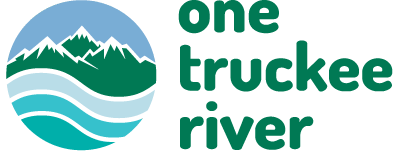Clean Up Our Parks & Riverbanks…With Critter-Proof Cans
Littering is the improper disposal of waste. It gets into our river, our parks, and our streets. Besides being unsightly, it’s unhealthy for animals and reduces water quality. While cleaning up litter in parks is important, it’s just as critical to reduce the amount of trash that ends up on the ground in the first place!
To reduce litter in our community, One Truckee River and Keep Truckee Meadows Beautiful (an OTR Coalition member) plan to increase the number of trash bins in parks along the Truckee River and replace existing trash receptacles with animal resistant models. Fundraising together, our first goal is $8,000. We’ll use this to purchase animal-resistant bins, replacing open trash cans in the Truckee River Corridor urban core. Here’s why animal-resistant trash bins are important – and how YOU can help!
How Bad is Our Litter Problem?
Keep America Beautiful, the organization best known for Adopt-a-Highway sponsorships, published a report on litter in 2020. In their research, 25.9 billion pieces of litter were identified along the shores of 10.7 million miles of US waterways and 23.7 billion pieces of litter along 8.3 million miles of US roadways. The most frequently littered items were cigarette butts, food packaging film, broken glass, and beer containers. According to their report, $11.5 billion is spent on litter clean ups in the US, annually!
Here in Northern Nevada, Keep Truckee Meadows Beautiful runs two annual clean up days. Their volunteers remove 35 tons of trash and green waste in September’s Truckee River Cleanup and 60 tons of trash and green waste in April’s Great Community Cleanup.
Reducing Litter
The best way to reduce litter is to understand human behavior and design our parks and riverside paths with people in mind.
Litter is most often found at transition points (where bottles must be thrown away at an entrance, or where two paths come together) and in areas where people congregate (such as picnic tables, benches, and playgrounds).
While throwing trash in public spaces was socially acceptable in the 1960s, by the 1980s, public education campaigns had changed social norms and littering was viewed as unethical. Today, people typically litter when there isn’t a convenient alternative.
Yes – It might sound obvious, but when trash cans are nearby, people tend to use them. Where it isn’t too much of a hassle, people make the right call and dispose of their waste responsibly. Litter rates decrease to 12% when receptacles are 10 feet away. Disney understands this well, and keeps their theme parks clean by placing easy-to-spot receptacles every 30 steps.
Protecting Wildlife
In regions like the Truckee River Corridor, where wildlife is common – a key step to reducing litter is keeping the trash in the bins where it belongs! Because so much of our waste is food and beverage packaging, it’s incredibly appealing to squirrels, rats, racoons, and other critters, especially during the winter months. Unfortunately, when wild animals eat our trash, it makes them sick! What’s more, in their search for food, they’ll drag trash items out of open bins and scatter them around our parks and riverbanks. Creating an unsightly mess, reduced water quality, and more work for clean-up crews.
Once litter enters our environment, it’s harmful to animals, as well as humans. Cigarette butts and other items contain toxins that leak into rivers and lakes. Decomposing litter can affect light and oxygen levels in areas where native species once thrived. Fish, birds, and other animals may mistake small plastics as food. And, as plastics become a part of our food chain, we consume them when we fish and hunt local wildlife. From a recreation perspective, litter is a health and safety hazard for locals and tourists who wish to enjoy outdoor areas. It can negatively impact our quality of life and local economy.
What Can We Do About It?
One Truckee River and Keep Truckee Meadows Beautiful are fundraising to promote clean water and healthy riparian parks along the Truckee through the installation of new trash bins. The research is clear: frequently placed receptacles in high-traffic areas are the best way to keep litter off the ground and out of our waterway! By selecting visible, animal-resistant bins, we’ll maximize our efforts.
Our first goal is to raise $8,000, which we’ll use to purchase six animal-resistant trash bins, replacing open collection containers from Brodhead Park to John Champion Park.
The bins we’ve chosen are rugged, high-quality, animal-proof, and designed for use in a wide range of outdoor settings. They stand up to harsh environmental conditions, vandalism, and damage from animals of all sizes. Of importance to our city workers – they combine the convenience of an animal-proof top loading door and a separate service door that allows bags to be swapped out frequently, without having to lift the contents up and out of the container.
Will you pitch in to support a healthy Truckee River and its community spaces? Be part of helping us make our goal.





